Nissan Qashqai review – Britain's favourite SUV gets a mid-life facelift, but is it enough to keep it on top?
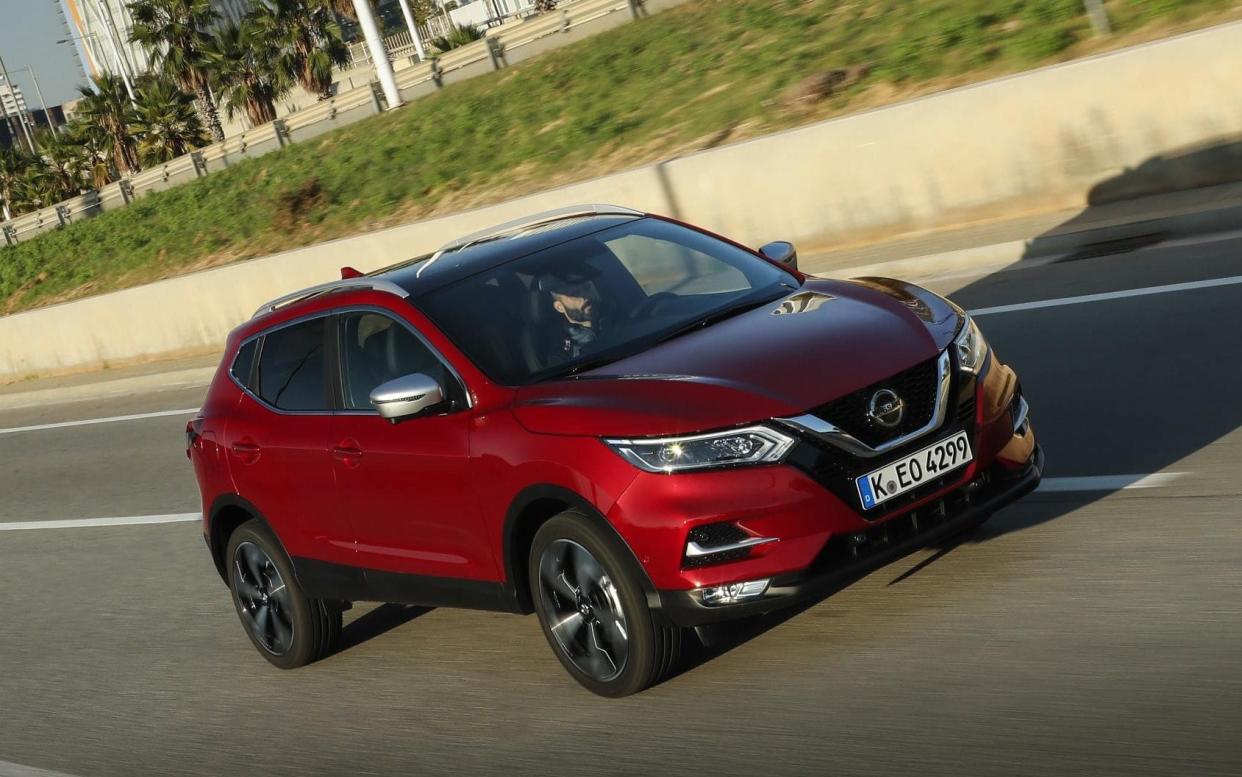
I saw Britain’s most popular SUV in its natural habitat the other day; parked in a bus stop outside a school, hazard lights on and doors open, with a harassed mum haranguing two pre-teen lads about football kit. One of them was proclaiming his innocence waving his breakfast pop tart, before a golden Labrador leant out of the boot and gently eased it out of his grasp.
Anti-dog theft tech is one thing they haven’t developed for the Nissan Qashqai at the company’s technical centre at Cranfield. It has, however, done just about everything else for this school-run champion, which regularly features in the UK top 10 best-sellers list.
It’s had 360-degree cameras for years before the opposition, it was predominately front-wheel drive at a time when rivals were still sweating over driving all four wheels and it’s been sold pretty much round the world in largely the same form.
Yet somehow the opposition, even when markedly superior, hasn’t been able to lay a glove on it. Last year the UK mid-sized SUV market was worth 466,000 vehicles and Nissan was market leader with sales of 41,943, 30 per cent more than its nearest rival, Ford's Kuga, and 46 per cent more than the third-placed Kia Sportage.
The Qashqai hit a Mumsnet sweet spot, just at a time when the mums were getting really fed up with driving multi-purpose vehicles (MPVs) that seemed like a state of fertility on wheels; that's a market that barely exists these days, which bears out the adage “mum knows best”.
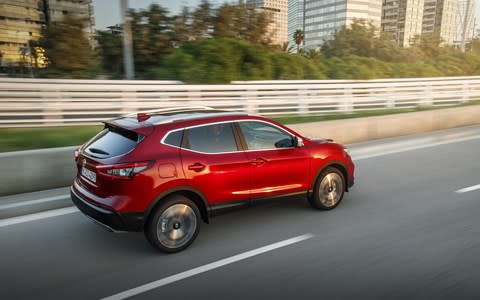
The first generation Qashqai replaced the Primera family saloon in 2006 which lasted until 2013, although the lack of rear space meant that in 2008 Nissan developed a longer version known as +2. The second generation two Qashqai was launched in 2013 in just one body size and is built in China, Russia, Japan and the UK at Nissan’s Tyne and Wear plant.
You could accuse them of being a bit lazy, but there’s no requirement to reinvent the wheel here. A minute after plipping the locks and walking away, I couldn’t actually tell you what a Qashqai looks like, it’s generic school-run SUV to the point where there’s actually nothing on it that marks it out. Perhaps that’s what folk want.
With Brexit looming and Renault Nissan Alliance boss Carlos Ghosn already beating the war drums about Nissan’s UK plants, it’s not surprising that even the smallest change to the Qashqai is regarded as news. After all, Sunderland employs 40,000 staff making the Juke, Leaf and Qashqai. It's built three million Qashqais and sold them to 100 countries and it puts tons into research and development as well as training new engineers for real, well-paid jobs.
Unexceptional the Qashqai may be, but Nissan has been clever to keep it pepped up for repeat customers, around 65 per cent of them from the fleet sector and with 20 per cent of all sales going into the UK's Motability Scheme.
Last year it got a host of new design details and upgrades to the handling and ride. This year it’s the turn of the engines, the adoption of the Alliance's 1.5 dCi turbodiesel engine, with a 1.7-litre unit arriving next year to go with an all-wheel-drive version (this will be the last-ever diesel to be fitted to a Qashqai) and this, a new, British-built 1.3-litre turbocharged four-cylinder engine, which replaces the previous 1.2- and 1.6-litre petrol units.
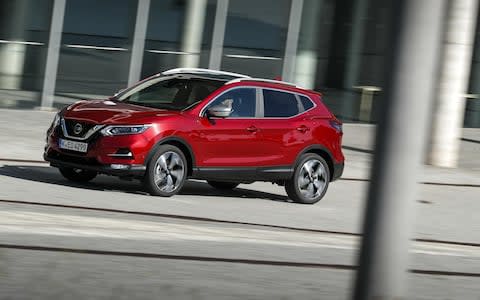
The 1.3 is part of a family of engines under development with Renault-Nissan and partner Daimler-Benz and is already fitted in the Mercedes A-class; a three-cylinder is also under development. Nissan’s nominal cylinder capacity for this new family is 333cc, which means a 1.3-litre needs to be four cylinder. It’s an interesting choice; Peugeot’s equivalent is 400cc and BMW’s half a litre, which many think is too big, though Ford has also adopted 500cc for its latest series of 1.5-litre, three-cylinder Ecoboost engines in the Focus.
The engines comes in two versions; 138bhp (140PS) and 158bhp (160PS) and has a couple of transmissions: six-speed manual and a seven-speed, twin-clutch, semi-automatic. The latter is a Getrag unit which is scaleable and first saw service with the Renault-Nissan Alliance in the Renault Clio RS then the Scenic; the latter provided the benchmark on the Qashqai’s development.
Inside, last year's new additions make it a quieter, calmer cockpit, although it's evident that Nissan does a lot with very little in there, making up for cheaper materials and a lack of colour with a curvaceous design and lots of texture changes.

On the less-than-impressive side is the new Nissan Connect centre touchscreen, which has a small, pokey screen and complicated interfaces in spite of the speed of the Tom Tom-based sat-nav software. The company is making a lot of its new connectivity, but for most folk the addition of Apple CarPlay and Android Auto software to allow simple, hands-free calling will be more significant. Other moans are the door facings, which rattle to the music and lack clever storage space.
Yet there's an undeniable quality of construction and a high-quality zing about the interior; the way the dials spin, the precision of the instruments, the neatness of the upholstery and the facia's mating surfaces, Nissan really does make the best of what it's got here. The provision of space isn't bad, too. The rear seats have only adequate head and leg room but the boot, at 430/1,598 litres, is plenty big enough for a family.
The little petrol engine is quiet and docile at idle - they've worked hard on refinement and noise, and it shows. However, the turbo has to work hard to wring this amount of power out of such a small-capacity unit, and the 160PS version in particular surges in the mid-range and has an abrupt on/off power delivery which even the new, electrically-actuated turbo wastegate fails to solve. Don't be beguiled by the numbers, the 140PS engine is much the better unit; smoother, quieter and less manic. You miss out on some of the top end, but you aren't missing much.
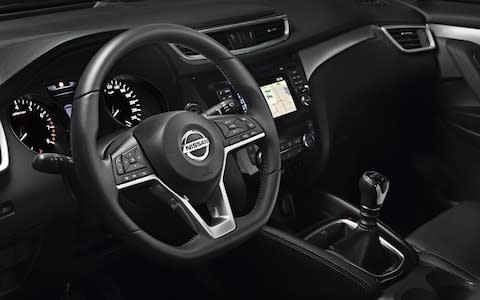
The six-speed manual gearbox is fast and light but the twin-clutch semi-auto isn't such a triumph. It's a tall order to configure software for a twin-clutch transmission bolted to a small-capacity turbo engine producing well in excess of 100bhp per litre and while I’ve every reason to suppose it’s passed all its tests and exams, the DCT gearbox was abrupt, especially when changing down at low speed, with audible thumps and clunks.
Other testers reported that several units were as bad, but that some were better in this regard, which suggests a variability which will strike terror into the hearts of Nissan's metronomic production engineers.
On the Catalan launch roads the Qashqai's ride balance seemed a trifle harsh until I discovered it was running on 19-inch high-performance Michelin Sport Pilot tyres. So that crashing through pot holes and scalpel-like carving into corners isn't what a standard car will do and we know from experience that the Qashqai has a firm but well-balanced ride quality on typical UK roads.
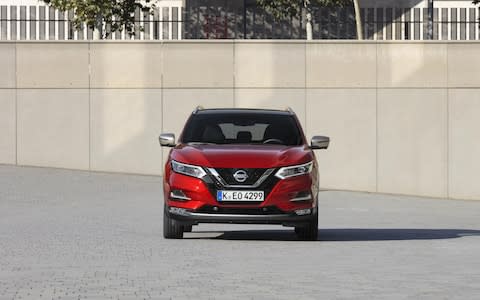
There's a lightness about the front end which is pleasing and the electronically-assisted steering is well weighted, even if it doesn't feel particularly well matched to the suspension characteristics. Chassis responses might not be the reason why folk buy the Qashqai, but Cranfield has always done this stuff well although this car's MacPherson-strut front and twist beam rear suspension is starting to feel a bit long in the tooth compared with some of the opposition.
“It's OK,” opined my driving companion. Yes, it's OK, but not outstanding and this market is moving fast. In 2007 the Qashqai had nine rivals; it now has 31 and some of them are very good indeed. Skoda's Karoq has a far superior ride quality and, while it is more expensive, some Qashqai buyers might want to look at this year's car of the year, Volvo's XC40.
There's also the thought that Britain's cities are now preparing for air quality taxes on what are deemed polluting vehicles and there's not a single hybrid in the Qashqai line-up. For so long at the top of the game, the Qashqai is beginning to feel a bit vulnerable and a little out of date.
Nissan Qashqai – specifications
Nissan Qashqai 1.3 140PS Tekna six-speed manual
TESTED 1,332cc, four-cylinder turbo petrol six-speed manual gearbox, front-wheel drive
PRICE/ON SALE range from £19.595 to £28,795 (as tested £25,895)/now
POWER/TORQUE 138bhp @ 5,000rpm, 177lb ft @ 1,600rpm
TOP SPEED 120mph
ACCELERATION 0-62mph in 10.5sec
FUEL ECONOMY 53.3mpg/42.8mpg EU Urban/Combined. 37.2mpg on test
CO2 EMISSIONS 121g/km
VED £165 first year, then £140
VERDICT With a new generation of small-capacity turbo petrol engines and a pair of new diesels which will be short-lived additions, Britain's top school-run SUV has been brought up to date for a market becoming more concerned over fuel economy and emissions. But, without a hybrid, is this enough?
TELEGRAPH RATING Four stars out of five
Nissan Qashqai – key rivals
Ford Kuga, from £23,225
The first Kuga was a car in its own right, but this Mk2 is a badge-engineered Ford Escape from the USA - whatever you may think about that, it’s a better car for it, if not as good to look at. Arguably a better drive than the Qashqai, but slightly compromised by its trans-Atlantic roots and without Nissan's attention to detail.
Kia Sportage, from £19,195
This South Korean competitor treads a fine line between being cheaper and better. Elsewhere in the range, Kias have moved upmarket (at least in price) but the Sportage, which is built in Slovakia, in this Mk2 guise is easily good enough and excellent value enough to be in the top five of the sector.
Vauxhall Mokka X, from £20,035
History might recall that Vauxhall was, prior to the General Motors sell-off, producing some great cars. The Mokka was not one of them but it does just enough, with sufficient equipment and a cute looking bodyshell, to make it into fourth place in the sector. We just wish it was better to drive.

 Yahoo News
Yahoo News 
